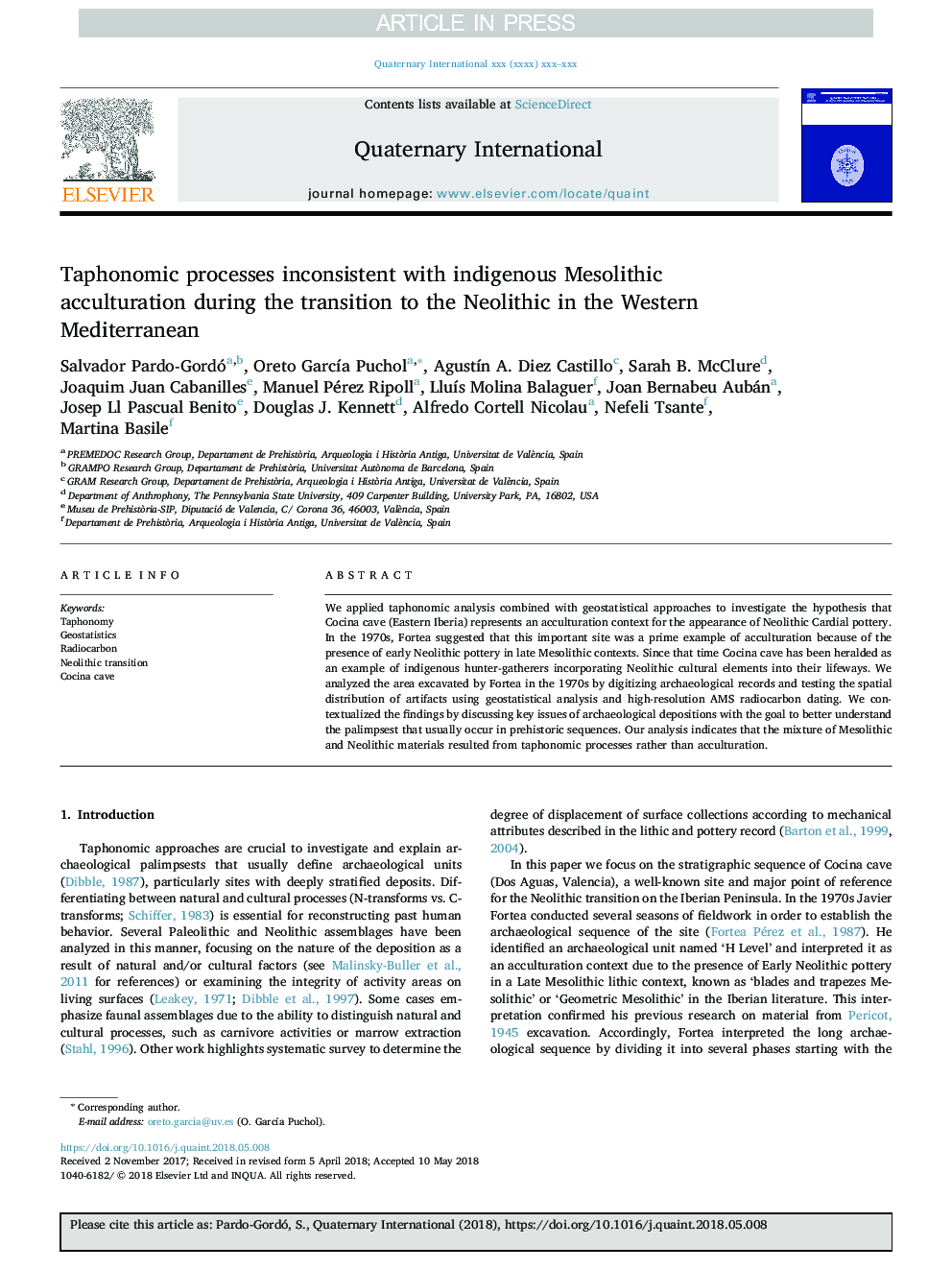| Article ID | Journal | Published Year | Pages | File Type |
|---|---|---|---|---|
| 7449143 | Quaternary International | 2018 | 12 Pages |
Abstract
We applied taphonomic analysis combined with geostatistical approaches to investigate the hypothesis that Cocina cave (Eastern Iberia) represents an acculturation context for the appearance of Neolithic Cardial pottery. In the 1970s, Fortea suggested that this important site was a prime example of acculturation because of the presence of early Neolithic pottery in late Mesolithic contexts. Since that time Cocina cave has been heralded as an example of indigenous hunter-gatherers incorporating Neolithic cultural elements into their lifeways. We analyzed the area excavated by Fortea in the 1970s by digitizing archaeological records and testing the spatial distribution of artifacts using geostatistical analysis and high-resolution AMS radiocarbon dating. We contextualized the findings by discussing key issues of archaeological depositions with the goal to better understand the palimpsest that usually occur in prehistoric sequences. Our analysis indicates that the mixture of Mesolithic and Neolithic materials resulted from taphonomic processes rather than acculturation.
Related Topics
Physical Sciences and Engineering
Earth and Planetary Sciences
Geology
Authors
Salvador Pardo-Gordó, Oreto GarcÃa Puchol, AgustÃn A. Diez Castillo, Sarah B. McClure, Joaquim Juan Cabanilles, Manuel Pérez Ripoll, LluÃs Molina Balaguer, Joan Bernabeu Aubán, Josep Ll Pascual Benito, Douglas J. Kennett, Alfredo Cortell Nicolau,
